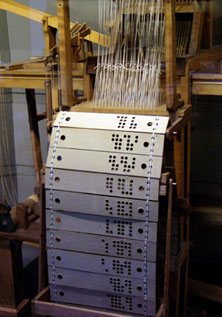bITs versus ByteS
I am often asked a very (seemingly) simple question: “What is the difference between bits and Bytes?” “Seemingly simple,” you ask? Well, yes, converting bits to Bytes is mathematically easy, but understanding why we use them for different things is a bit more complex. I know that several of you are thinking “Oh great! Here we go again with another nerd spouting off about useless terms… I wonder if he’ll mind me taking a nap?” To that I say: “This is for YOU! Understanding these fundamentals can help you in things you do every day; such as: deciding which cellular data plan to choose, or how big of a hard drive you need to buy for backup, or how big does my file need to be so I can send it to my boss?”
Let me start by pointing-out that everyone uses data. Even though (technically) there are parts of the world where cellphones and laptops don’t exist, when Joshua Pramis of Digital Trends predicted that the number of mobile devices would exceed the population of the world by 2014. He was right. I’m willing to bet that each of you here have at least a cellphone and a laptop, right?
That said, how many of you have ever gone to a cellular phone store and thought that the salesperson was speaking a foreign language when he/she was trying to sell you a data plan to go with your new smart phone? Kilowhat? Megawho? You just said MegaByte and then Megabit. Aren’t those the same thing? Wait! I’m confused. How am I supposed to measure data so I know what to buy?
Well, the first part is very simple. 8 bits equals 1 Byte. But, what exactly is a bit? Well, a bit is the smallest unit of data with which we can represent and manipulate data. It consists of a value of state: On or Off, True or False, and for what I’m talking about , 0 or 1.

The concept of a bit originated in the early 1700’s with Basile Bouchon and Jean-Baptiste Falcon when they created a perforated roll of paper that controlled a weaving loom by allowing levers to either be closed (pushed down by the absence of a hole) or open (allowed to extend through the hole) thus turning the appropriate shuttlecock “on” or “off.” This process was later adopted by early computer manufacturers in the form of punch-cards and used in the same manner to turn circuits designed to do a specific function either on or off.
By now, I’m sure a some of you have noticed that I have been capitalizing the word “Byte” and not the word “bit.” The reason for that is to help you become accustomed to the nomenclature used when measuring data. As I mentioned before, 8 bits equals 1 Byte. When we start measuring data we do so in multiples of 1024. There is a reason for that, but that is a different topic by itself, but if any of you wish to know, email me and I’ll be glad to bend your ear.
The reason we use an upper case and lower case “b” to differentiate between bits and Bytes is because of the abbreviations. Kb has a different value that KB. We abbreviate because, as the technology improves, the numbers grow exponentially and would become more difficult to write. For example, on the following chart, it is easier to say “1 MegaByte” than it is to say (and remember for that matter) “ One Million forty eight thousand five hundred and seventy six Bytes.”

Why do we care about this at all? Well, as I mentioned before, we can calculate the size of data when we need to store it, send it, or receive it. This can help us save both time and money. How so?
Well, when storing data you need to know how much to buy. For example, You want to buy a tablet or an eReader but don’t know which one to get or how much memory it should have. To visualize this for you, I’ve created a little exercise:
The Hobbit, by J. R. R. Tolkein, contains approximately 95,536 words (according to Lord of the rings project dot com – www.lotrproject.com). That is roughly the equivalent of 6,100,000 bits (when you use an average word length of 8 letters) which is 762,500 Bytes, which is 744 KiloBytes, which is .72 MegaBytes. So, on a tablet or eReader with 8 GigaBytes of memory, you can store roughly 11,275 copies of the hobbit (or comparably sized books). To get an idea of how many that is, here is a sculpture created with just over 11,000 books (as documented by Monica Racic in her blog on The New Yorker’s website).

With this visual in mind, let’s think about what this means when transferring just one of these books to your new tablet. This is where we say goodbye to Bytes and focus on the bit. Internet speed is measured in bits. We measure it in bits because data is sent as a 1 or a 0. The internet doesn’t care if you have a whole character or not, it’ll let the computer figure out what’s what. So, most times you’ve downloaded a file only to attempt opening it and receive the error: “the file is corrupt,” it is likely that your internet connection was interrupted before all the bits were downloaded.
I’ll save you the pain of calculating data transfer rates and skip to the point. Using our previous example of The Hobbit, if you buy a tablet from, say… Verizon, that has a 1 Mb per second internet connection, it will take you approximately 5 seconds to download 1 copy of The Hobbit. So, how many seconds will it take you to download your 10 favorite books to your new tablet?
To make a long story short, or as we say in the world of formal communication: “In Conclusion,” we measure storage in Bytes because a Byte represents an entire character. It takes eight bits to make one Byte. We measure internet speed in bits because we only transmit the 1’s and 0’s and let the computer figure out what is what. We abbreviate bit with a lower-case b and Byte with an upper-case B so we know that we are talking about different things. And finally, we use Kilo, Mega, Giga, Tera, and other like terms to denote multiples of each so we are not stuck saying really, really long numbers.
Unquestionably imagine that which you said. Your favorite reason seemed to be at the internet the easiest thing to have in mind of. I say to you, I definitely get irked while people consider issues that they just do not recognise about. You managed to hit the nail upon the highest and defined out the whole thing without having side-effects , other folks can take a signal. Will probably be again to get more. Thanks
We’re a group of volunteers and starting a new scheme in our community. Your website provided us with valuable info to work on. You have done an impressive job and our entire community will be grateful to you.
Hi there! I know this is somewhat off topic but I was wondering
which blog platform are you using for this website? I’m getting fed up of WordPress because I’ve
had issues with hackers and I’m looking at alternatives for another platform.
I would be fantastic if you could point me in the direction of a good platform.
Hmm… WordPress is the standard for blogs these days. And in reality it’s no less secure than anything else that’s out there. Wix and Squarespace are two trendy ones that are pretty user friendly and have lots of features. I personally use a combination of custom php with Drupal. But then again, I’m a nerd… Weebly might be a good one too if you’re thinking about integrating eCommerce (they integrate well with square). Hope this helps!
Hello there, just became aware of your blog through Google, and found
that it’s really informative. I am gonna watch out
for brussels. I’ll appreciate if you continue this in future.
Numerous people will be benefited from your writing.
Cheers!